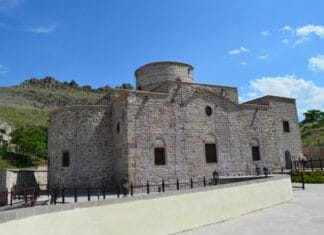The Congress of Berlin and Its Decisions
After signing the Congress of Berlin Treaty, Prince Bismarck and Lord Beaconsfield believed they had successfully changed history and ensured peace in Europe.
Unforeseen Forces...
Bulgaria Declares Independence
On October 5, the governments of Britain, France, and Russia were shocked by secret messages from Bulgaria. At 11:00 AM, Prince Ferdinand announced that...
The Deesis in the Apse
The Deesis composition in the apse features Christ, called the "Most Benevolent," with Theotokos (Mary) on the left and John the Baptist on the...
The Stadium in Ephesus
North of the great theater in Ephesus, archaeologists have found the remains of an ancient stadium. An inscription shows that it was rebuilt during...
The Theater in Ephesus
The large theater in Ephesus still stands today, located just across the street from the commercial marketplace. It was first built during the Greek...
The State Agora A Public Square for Civic Life
In the upper eastern part of Ephesus, there was a large public square called the state agora. It measured about 525 feet (160 meters)...
Ancient States of Asia Minor
Pontus, Cappadocia, and Pergamun
Pontus A Multilingual Region
The northern coast of Asia Minor, known as Pontus, was dominated by a feudal Persian nobility. Despite its...
Turmoil and Decline in the Seleucid Kingdom
Unhappy Marriages and Poisoned Kings
The marriage between Antiochus II and Berenice turned out to be far from happy. After a brief period, Antiochus abandoned...
Challenges and Decline in the Seleucid Kingdom
During its zenith around 300 B.C., the Seleucid Kingdom, led by Seleucus Nicator, spanned approximately 1.5 million square miles. Despite being considered Alexander’s true...
Christians of various stripes
By the fourth century, historians must pay much more attention to Christians of various stripes and their doings. No reader has to search very...














